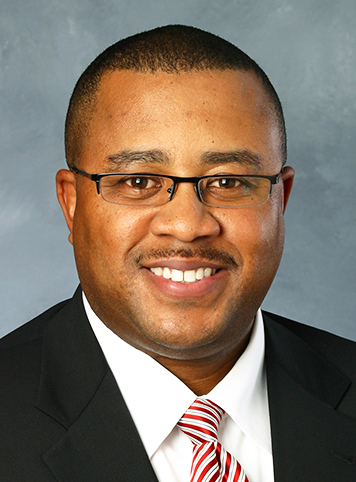When an organization operates within a complex structure, helping stakeholders recognize a high-potential news opportunity can be a tough assignment for even the most skilled business communicators. In the real B2B world, there’s often a pervasive nose-to-the-grindstone attitude which may inhibit employees from developing their own “nose for news.” Much like investigative reporters, B2B communicators must trail their colleagues in R&D, operations, IT, HR or customer service to get the story. Or is there an easier way? Seasoned communications executives share techniques and approaches they have adopted to find the early threads of an interesting narrative from the supply or value chain.
 |
DAVID J. ALBRITTON
VP, Communications, ITT Defense & Information Solutions
As a top-tier provider of products and services in the aerospace and defense industry, ITT Defense & Information Solutions has a very diverse portfolio that includes market-leading solutions such as next-generation night vision goggles, electronic warfare and air traffic management technologies. This provides us with a rich and regular source of story ideas, although due to certain customer relationships and security classification issues, our internal customers are sometimes reluctant to release certain information.
However, to help them move past their uncertainty, our team continually engages and educates our executive and business teams by showing them examples of positive print, broadcast and Web articles about ITT and other companies. This helps us to thoroughly explain how artful massaging of the story content and a willingness to openly discuss certain topics with media representatives can help to shape the resulting articles.
In some cases, business representatives who had previously preferred not to engage with media have freely signed up to conduct as many as 15 individual interviews in three days during some of our major external events, such as international trade shows. Once they’ve seen the positive results that are possible, it’s easy to make the correlation to how much more informed our customers can become about our company and our technologies, so many of these individuals are now regularly coming to our team with story ideas.
 |
ATHENA CAMPOS
Director, Global Brand Strategy & Truck Marketing, Navistar
Build a solid brand communications framework and you can leverage any channel to collect the news.
Navistar is a global organization of transportation innovators grounded in pragmatic Midwest values that are focused on delivering what matters to our customers across the world. One challenge in building our corporate reputation is consistently communicating the decisions we make daily that ladder up to that brand promise. As nose-to-the-grindstone folks, we’re just not wired to talk about what we inherently do each day.
So to help 16,000-plus employees understand and communicate how they live the brand promise, we’re crafting a simple brand communications framework that every leader can use to articulate the brand strategy, our purpose and guiding values. And with clarity of purpose, local HR and corporate communications teams have the right context to seek and highlight the quiet heroes on the line or in the field.
Ultimately, building the right brand communications framework will clarify what matters to leaders and help corporate communications and HR solicit the right news. By sharing media success stories internally within an organization, PR pros can reinforce the positive steps taken by employees who contributed to the coverage. Over time, more employees will develop a better understanding of why journalists do or don’t end up using stories or interviews, and communicators won’t have to struggle as much with finding internal sources for news.
 |
CARMEN FERRIGNO
Global Communications Director, Dow Coating Materials
While a nose for news is good, a knack for visual storytelling is better. Dow Coating Materials is a leading raw materials supplier for the global architectural and industrial coatings markets—think paint. We invent the technology behind things like paint-and-primer in one and formaldehyde-absorbing paint. Our technical folks are really, really good.
We work with them on harnessing the “ah ha” moment. That’s when a highly complex, molecular-level interaction can be explained in easily digestible, “kitchen table” anecdotes. And, it works.
We recently launched a technology called EVOQUE Pre-Composite Polymer Technology, which increases the light scattering capabilities of a coating formulation. In essence, it better hides whatever surface is being painted over.
We would not launch the technology until our technical team could describe the breakthrough in simple, easy and visual terms. It was a hard exercise, but they got it. They created an analogy of a party planner who ensures that the crowd is evenly distributed on a dance floor to make it look full. That easy-to-understand anecdote resonated with the media, our manufacturing population and sales team. The result was blowout press coverage, engaged employees and educated customers.
 |
BILL STEERS
General Manager, Communications and Corporate Responsibility, ArcelorMittal Americas
Like most PR practitioners, we seek both internal and external communications opportunities by building relationships and engaging regularly with corporate and plant-level leadership representing all business segments. While we encourage our colleagues to share story ideas related to the company’s products, processes and people, we do not depend on those stories to come to us.
Our success depends on how well we understand the business and our ability to tell stories that align with corporate objectives. My team is strongly encouraged to infiltrate all aspects of the business—from steel-making operations and R&D to learning environmental and supply chain management. We seek opportunities to partake in meetings, listening acutely for compelling activities then dig deeper, evaluate for relevancy and try to push the organization further. For example, by developing a story about energy reduction efforts at multiple U.S. facilities, we pushed further and the next thing you know, ArcelorMittal USA became the first steelmaker to be named an Energy Star Partner.
Through weekly calls with communicators from operations in North and South Americas, we share information and ideas across geographies. Recently, when the ArcelorMittal USA Foundation made a gift to the Japanese disaster relief efforts, our colleagues in other parts of the world also secured coverage in their locales because we were able to effectively mobilize our communications network
We have also tapped into employee councils at major facilities to uncover ideas. Members discuss story ideas and share those ideas with a communications team members, ensuring potential local headlines make their way to corporate communications. PRN
Contact
B2B Communications is written and compiled by Mary C. Buhay, VP of marketing at New York-based Gibbs & Soell Public Relations. She can be reached at [email protected].
